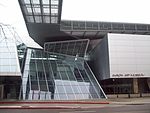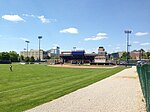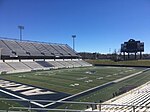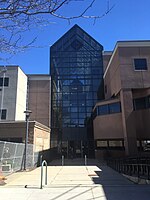Akron metropolitan area

The Akron, OH Metropolitan Statistical Area, sometimes referred to as Greater Akron, is defined by the United States Office of Management and Budget as an area consisting of two counties, Summit and Portage, in Northeast Ohio and anchored by the city of Akron. As of the 2020 census, the MSA had a population of 702,219. The Akron MSA is also part of the larger Cleveland–Akron–Canton, OH Combined Statistical Area, which has a population of 3,633,962 people as of the 2020 census, the largest metropolitan area in Ohio. Historically, Greater Akron was known as the center of the United States' tire and rubber industry throughout the 20th century, and today one major tire company (Goodyear Tire and Rubber) still is based there. More recently, the area has become a center of polymer science research and manufacturing for the country, and is home to five Fortune 1000 corporations.
Excerpt from the Wikipedia article Akron metropolitan area (License: CC BY-SA 3.0, Authors, Images).Akron metropolitan area
Sherman Street, Akron South Akron
Geographical coordinates (GPS) Address Nearby Places Show on map
Geographical coordinates (GPS)
| Latitude | Longitude |
|---|---|
| N 41.066666666667 ° | E -81.516666666667 ° |
Address
Sherman Street 604
44311 Akron, South Akron
Ohio, United States
Open on Google Maps










